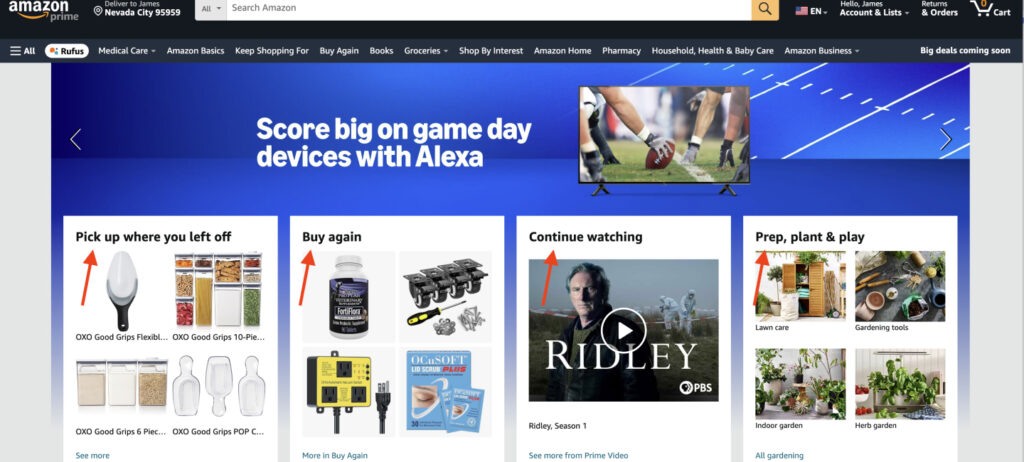Your cart is currently empty!

Reject the CTA for an Effective Relationship Marketing Strategy
Author:
Accepted thinking is the enemy of innovation. It’s time to transform your relationship marketing strategy and boost your business by challenging a fundamental concept: the call to action.
“Wait, what is he saying?”
If you believe, as I do, that a relationship marketing strategy builds real value, then it’s time to consider how the traditional CTA conflicts with an effective relationship marketing strategy.
Where is this coming from?
This shift in thinking stems from an insight shared by a loyalty researcher I worked with earlier in my career: “90% of loyalty problems can be traced to a flawed sales process.”
In this post, we’ll explore why the ubiquitous CTA doesn’t support the buyer’s journey and hinders your marketing efforts.
Yeah, I know this is crazy talk, but stick with me. I’ll show you how replacing CTAs with a customer-centric alternative shifts your marketing from transactional to relational, setting you up for high-quality conversions and stronger customer connections.
The Problem with “Call to Action”
The phrase “call to action” has become deeply ingrained in marketing vocabulary. It’s a staple in our strategies, campaigns, and metrics. But have we stopped to consider what this phrase really communicates?
“Call to action” is inherently business-centric. It’s marketers shouting at customers and telling them what to do. It’s a directive, a command that serves our interests rather than those of our customers. This approach reflects an inside-out marketing perspective, where our goals take precedence over our customers’ needs and journeys.
This mindset creates a disconnect between your business and your audience. It makes your marketing feel pushy or manipulative, potentially damaging the very relationships you’re trying to build. In an era where customers value authenticity and personal connection, this approach may be doing more harm than good.
So, if “call to action” is problematic, what’s the alternative? How can we guide our customers’ journey in a way that aligns with the five relationship marketing principles?
From “Call to Action” to “Pathways”

Shifting your lexicon from “call to action” to “pathways” represents a fundamental change in your marketing mindset. It’s a move from inside-out thinking, where business goals drive customer interactions, to outside-in thinking, where customer needs and journeys shape your marketing strategy. You are no longer shouting at prospects and telling them what to do. You are supporting their journey to a sensible solution.
A pathway and a CTA are functionally the same, but a pathway recognizes that the customer is on a journey, a route your customer has chosen. It’s not about pushing or pulling; it’s about guiding and supporting. When you provide pathways, you’re offering options that align with your customer’s needs and desires rather than demanding that they take specific actions that primarily benefit your business.
When users select a pathway, they’re not just clicking a button—they’re telling you who they are and implicitly giving you permission to provide them with the information they seek. This self-selection process allows for a more organic, customer-driven interaction. And each time your marketing supports their journey, you are building a relationship. Each event is a trust event. A ‘pathway’ aligns with your relationship marketing strategy, while a ‘CTA’ doesn’t.
You may still be thinking that I’m a crazy person, but look around. Highly effective websites like, say, Amazon.com are using this strategy.

By creating clear pathways that reward consumers with the information they need to take the next step in their journey easily, you shift your marketing from transactional to relational. You’re no longer just trying to get the next click or sale; you’re building a relationship by consistently providing value and guidance.
The Impact of Changing Your Approach
When you replace “calls to action” with “pathways,” you’re doing more than just changing terminology – you’re transforming your entire marketing philosophy. This shift can have profound effects on your business and your customer relationships:

- Enhanced Customer Experience: By focusing on guiding rather than directing, you create a more positive, less pressured experience for your customers. They feel supported rather than pushed, which can lead to increased satisfaction and loyalty.
- Improved Customer Insights: As customers choose their own pathways, you gain valuable insights into their interests, needs, and behaviors. This information can help you refine your offerings and marketing strategies over time.
- Increased Trust: When customers see that you’re prioritizing their journey over your immediate gain, it builds trust. This trust is the foundation of strong, lasting customer relationships.
- Better Long-term Results: While “calls to action” might drive short-term conversions, “pathways” nurture relationships that can lead to sustained business growth and improved customer lifetime value. The most important sale isn’t the first sale; it’s the second.
- Alignment with Relationship Marketing Principles: This approach embodies the essence of relationship marketing – creating value that goes beyond functional benefits and building genuine connections with customers.
By embracing this new mindset, you’re positioning your business to thrive in an era where customer relationships are the key to success. You’re not just selling a product or service; you’re creating an experience that resonates with your customers’ needs and values. The conversion stops being a ‘sale’ and becomes the next logical step in the customer’s journey.
Pathways vs CTA – Their Role in a Relationship Marketing Strategy
Rejecting the “call to action” and embracing the concept of “pathways” marks an evolution in your relationship marketing strategy. It’s a shift that aligns with the principles of relationship marketing and responds to the changing expectations of modern consumers.
By focusing on creating valuable pathways for your customers, you’re not just guiding them toward a purchase—you’re supporting their journey, building trust, and setting up a long-term, mutually valuable relationship. This approach transforms your marketing from a series of transactions into a process of building meaningful relationships.
Remember, the most successful businesses are those that understand and cater to their customers’ needs. Changing your mindset from “What do we want customers to do?” to “How can we best support our customers’ journey?” sets the stage for stronger customer relationships and sustainable business growth.
Embrace this new perspective, and watch as your marketing efforts evolve from simple calls to action into valuable, customer-centric pathways that lead to lasting success.
Related Posts
-
Use the ChatGPT Model That Matters
See how using the right tools (models) balances quality and cost.
-
Marketing Strategy Mistakes to Avoid
Discover the 12 common marketing strategy mistakes that can hinder growth.
-
Your Marketing – A Pile of Parts or a Wheel?
Your marketing isn’t missing effort—it’s missing connection. Making connections turns scattered tactics into momentum.
Author: James Hipkin
Since 2010, James Hipkin has built his clients’ businesses with digital marketing. Today, James is passionate about websites and helping the rest of us understand online marketing. His customers value his jargon-free, common-sense approach. “James explains the ins and outs of digital marketing in ways that make sense.”
Use this link to book a meeting time with James.

